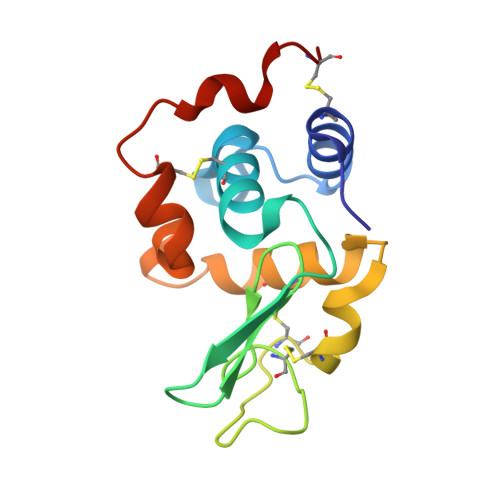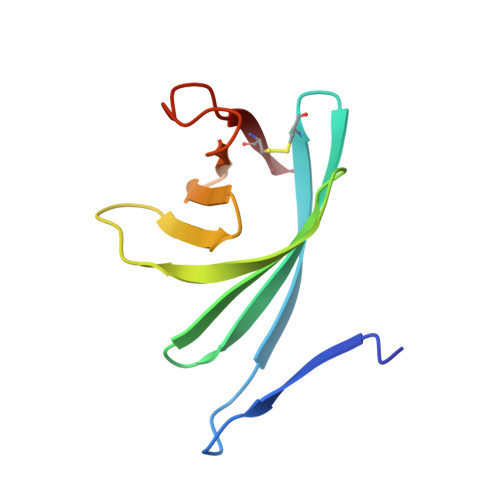Structural Basis for the Inhibition of Human Lysozyme by PliC from Brucella abortus
Um, S.H., Kim, J.S., Kim, K., Kim, N., Cho, H.S., Ha, N.C.(2013) Biochemistry 52: 9385-9393
- PubMed: 24308818
- DOI: https://doi.org/10.1021/bi401241c
- Primary Citation of Related Structures:
4MIR, 4MIS, 4ML7 - PubMed Abstract:
Lysozymes are the first line of defense for a diverse range of organisms that catalyze the degradation of bacterial peptidoglycan. Gram-negative bacteria produce proteinaceous lysozyme inhibitors to protect themselves from the action of lysozymes. To date, MliC or PliC (membrane-bound or periplasmic inhibitor of c-type lysozyme, respectively) has been found in various Gram-negative bacteria. Here, we report the crystal structures of Brucella abortus PliC and its complex with human c-type lysozyme. The complex structure demonstrates that the invariant loop of MliC/PliC plays a crucial role in the inhibition of lysozyme via its insertion into the active site cleft of the lysozyme, as previously observed in the complex structure of Pseudomonas aeruginosa MliC and chicken c-type lysozyme. We identified a new binding interface between a loop adjacent to the active site of human lysozyme and a loop carrying Glu112 of B. abortus PliC, the structure of which was disordered in P. aeruginosa MliC. Because MliC/PliC family members have been implicated as putative colonization or virulence factors, the structures and mechanism of action of MliC/PliC will be relevant to the control of bacterial growth in animal hosts.
- College of Pharmacy and Research Institute for Drug Development, Pusan National University , Busan 609-735, Republic of Korea.
Organizational Affiliation:

















